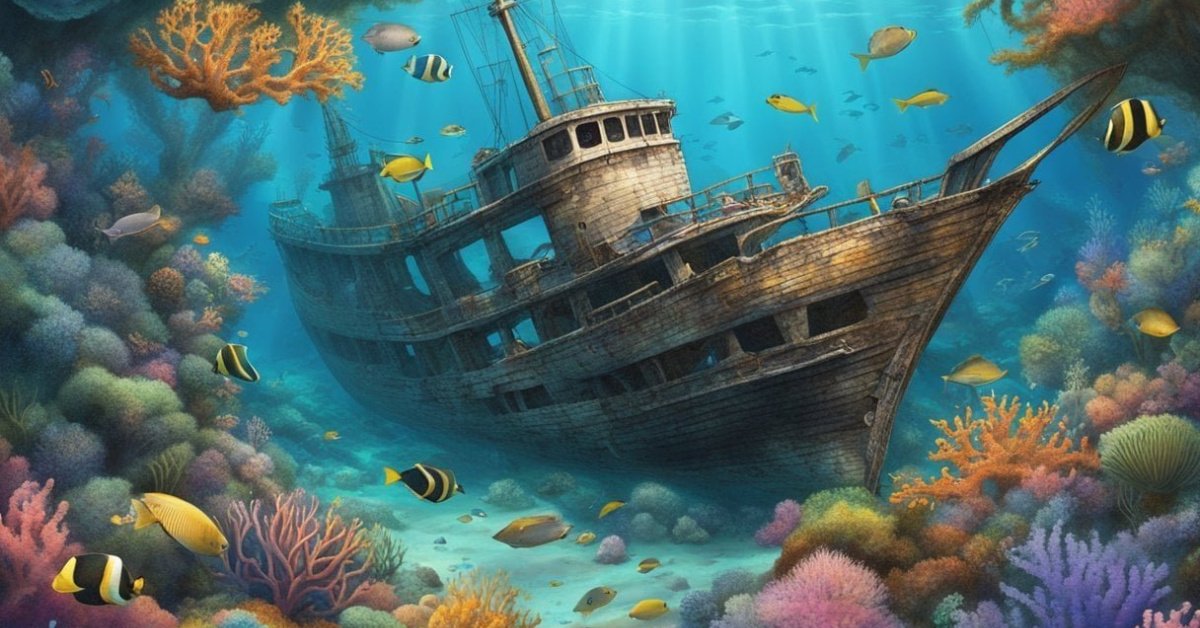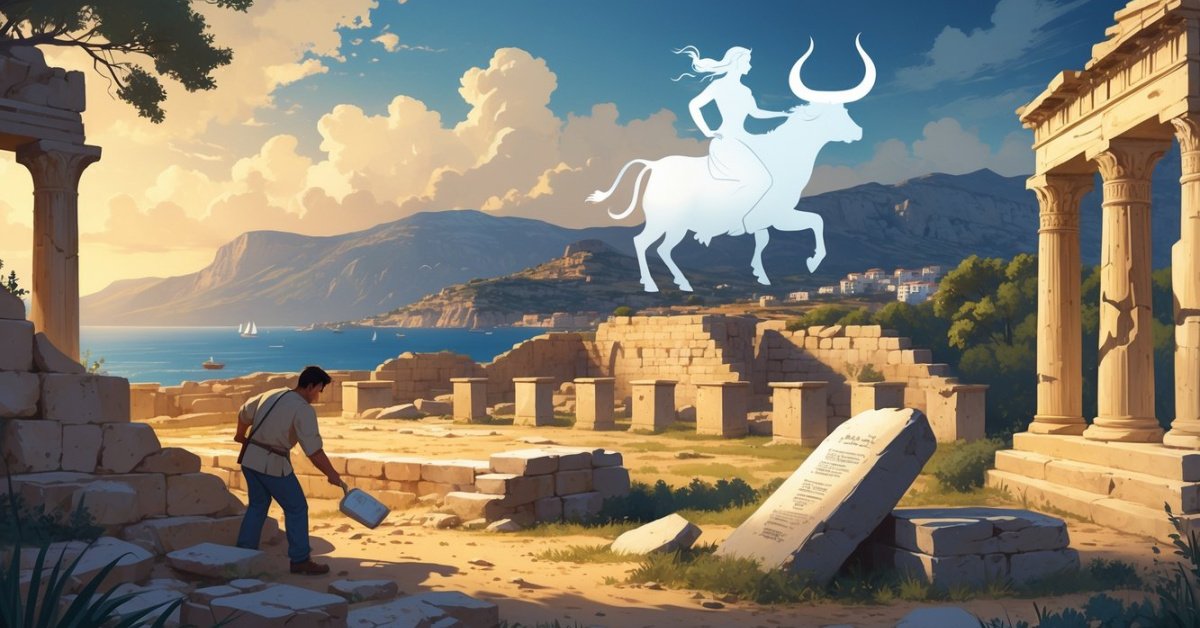Florida’s Treasure Coast hides a world of sunken ships and lost riches. The area got its name from the many Spanish treasure ships that sank there long ago. These old wrecks still draw treasure hunters today.
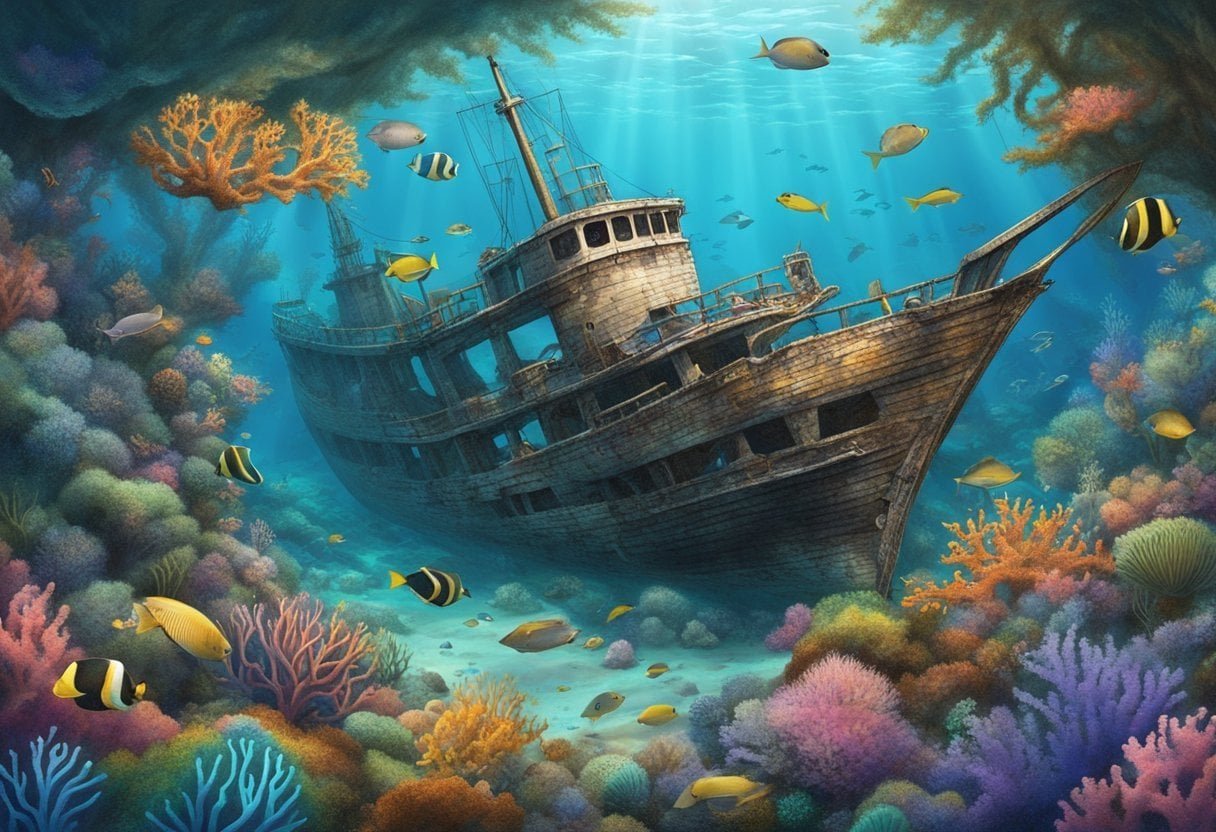
One famous shipwreck is the 1715 Spanish Treasure Fleet. A huge storm sank 11 ships carrying gold and silver. Over 3 million silver coins from this fleet still lie on the ocean floor off Florida’s east coast. People keep finding treasure from these ships even now.
The coast has many other shipwrecks too. Some are very old, like Spanish galleons from the 1700s. Others are newer ships that sank more recently. These wrecks give divers cool places to explore and learn about the past.
History of Shipwrecks off the Treasure Coast
Florida’s Treasure Coast got its name from the many shipwrecks that happened there. These wrecks left lots of treasure on the ocean floor.
Let’s look at some important events that made this area famous.
Spanish Treasure Fleet
Spain sent big fleets of ships to the New World. These ships carried gold, silver, and gems back to Spain. The ships often sailed close to Florida’s coast.
Many Spanish galleons sank near Florida. Some of these ships carried huge amounts of treasure. For example, one ship that sank near Key West had $400 million in coins and silver.
The Spanish Treasure Fleet wrecks are a big part of Florida’s history. They attract treasure hunters and historians to this day.
1715 Treasure Fleet
The 1715 Treasure Fleet is very famous. It was a group of Spanish ships that sank off Florida’s coast. A hurricane hit the fleet and wrecked many ships.
These ships carried millions of silver coins and other treasures. The wreck scattered treasure all along the coast. This event is why the area is called the Treasure Coast.
People still find coins from this fleet today. In recent years, treasure hunters found hundreds of silver coins from these wrecks.
Piracy and Hurricanes Impact
Pirates were a big problem for ships in this area. They would attack treasure-laden vessels and steal their cargo. This made the trip even more dangerous for Spanish ships.
Hurricanes were another major threat. These powerful storms could sink entire fleets. The 1715 Treasure Fleet is a good example of this.
The mix of pirates and bad weather made shipwrecks common. This left a lot of treasure on the ocean floor. Even today, people search for lost ships and their valuable cargo.
Famous Shipwrecks
Florida’s Treasure Coast is home to many exciting shipwrecks. These old ships tell stories of adventure and treasure from long ago.
Let’s look at some of the most famous wrecks found in these waters.
Nuestra Señora de Atocha
The Nuestra Señora de Atocha sank in 1622 during a hurricane. It carried a huge amount of treasure. Mel Fisher found the wreck in the 1970s after years of searching.
The ship’s cargo included:
- Gold bars
- Silver coins
- Emeralds
- Jewelry
Divers brought up items worth millions of dollars. Today, some of the treasures are on display in museums. People can see and touch real pieces of history from this famous Spanish galleon.
Santa Margarita
The Santa Margarita was part of the same fleet as the Atocha. It also sank in the 1622 hurricane off the Florida Keys. Treasure hunters found parts of the wreck in 1980.
Items recovered from the Santa Margarita:
- Gold chains
- Silver bars
- Pearls
Searching for this ship was tricky. Storm currents spread its remains over a large area. Divers are still finding new treasures from the Santa Margarita today.
Urca de Lima
The Urca de Lima was part of the 1715 Spanish Treasure Fleet. A hurricane wrecked this ship near Fort Pierce. It was one of many ships lost in that storm.
The Urca de Lima carried:
- Silver coins
- Copper ingots
- Foodstuffs
This wreck is now an underwater museum. Divers can explore the site and see the ship’s remains up close. It’s a great way to learn about Spanish colonial trade.
SS Tarpon
The SS Tarpon was a steam ship that sank in 1937. It went down in bad weather near Panama City. Unlike the other ships, it wasn’t carrying treasure.
The SS Tarpon’s cargo included:
- Food
- Household goods
This wreck is popular with divers. Fish and sea life now call the old ship home. It’s a great spot for underwater photography and exploring marine habitats.
Treasure Hunting Legends
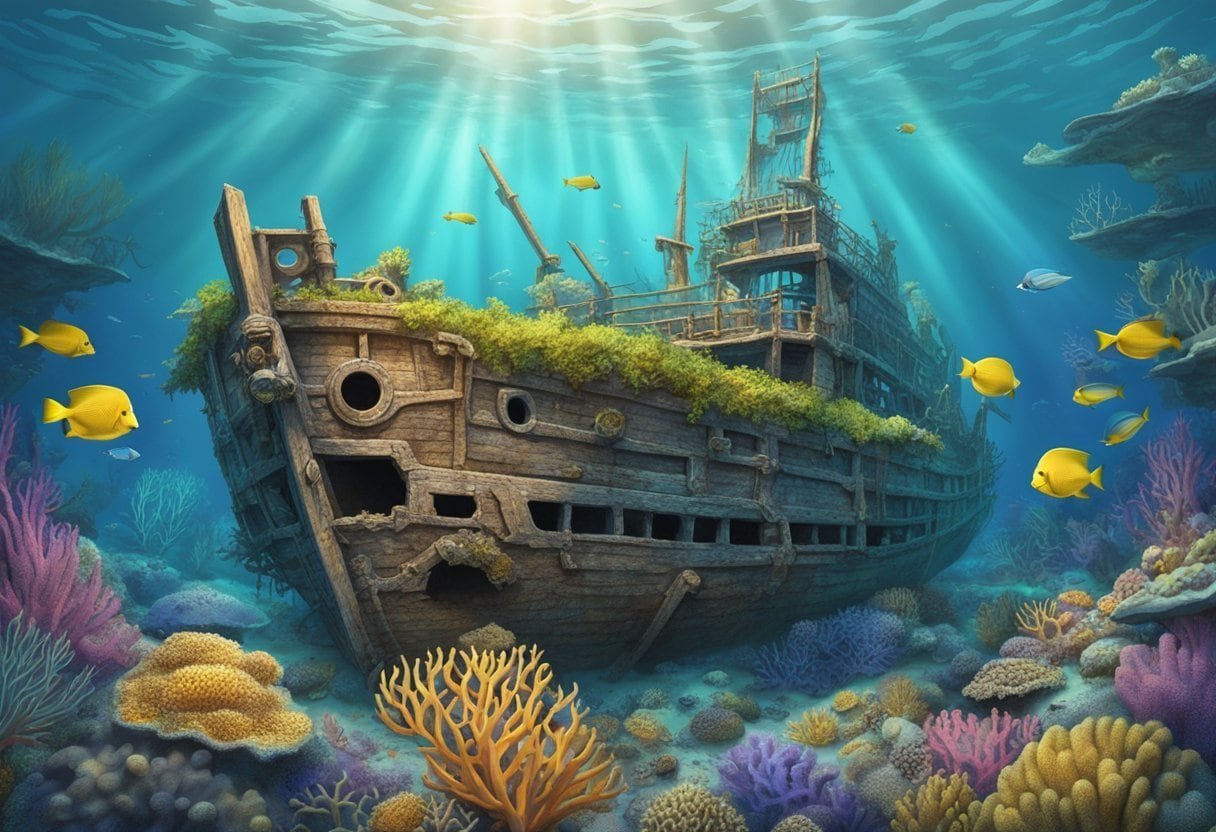
Treasure hunting off Florida’s coast has captivated adventurers for centuries. Brave souls have searched for sunken riches, with some finding amazing success.
Mel Fisher and the Atocha
Mel Fisher became a legendary treasure hunter after his amazing discovery of the Nuestra Señora de Atocha shipwreck. The Spanish galleon sank in 1622 off the Florida Keys during a hurricane.
Fisher spent 16 years searching for the Atocha. His team found gold bars and coins worth millions in 1985. This discovery sparked a treasure hunting craze.
Fisher’s company kept searching the wreck site. They found more treasures over the years, including:
- Emeralds
- Silver coins
- Gold chains
- Artifacts
The total value of the Atocha’s cargo is estimated at $400 million. Fisher’s story inspired many other treasure hunters to try their luck off Florida’s coast.
After Fisher passed away, his family continued the treasure hunting business. They sold the rights to search the Atocha wreck to another company. The new owners have made more exciting finds in recent years.
Archaeological Significance
Shipwrecks off Florida’s Treasure Coast hold great value for archaeologists. These underwater sites offer a unique glimpse into the past, revealing information about trade, technology, and life at sea.
Excavation and Conservation
Archaeologists use special tools and techniques to remove items from the seafloor without damaging them. This helps protect valuable artifacts.
Once brought to the surface, artifacts need quick treatment to prevent decay. This process can take months or even years.
Many shipwrecks become underwater museums. These archaeological preserves let divers explore history while keeping the sites safe.
Emanuel Point Wreck as a Case Study
The Emanuel Point Wreck is a great example of underwater archaeology. Found near Pensacola, Florida, it dates back to 1559.
Archaeologists have learned a lot from this site. They found:
- Ship parts
- Personal items
- Food remains
These finds help paint a picture of life on a Spanish colonial ship. The wreck is now part of a marine sanctuary, protecting it for future study.
By looking at sites like this, archaeologists can piece together stories from long ago. They help us understand how people lived and worked on the seas hundreds of years ago.
Economic Impact of Shipwrecks

Shipwrecks off Florida’s Treasure Coast bring big money. They create jobs and boost tourism. They also help sea life and make cool places to dive.
Artificial Reefs Creation
Sunken ships make great homes for fish and other sea creatures. Over time, they turn into artificial reefs teeming with marine life.
Divers love to explore these underwater worlds. This brings in tourist dollars to local towns. Dive shops, boat rentals, and hotels all benefit.
Fishing around shipwrecks is also popular. Anglers catch many types of fish that live on these reefs. This helps the local fishing industry grow.
Scientists study the reefs too. They learn about how sea life changes over time. This research can lead to new discoveries and jobs.
Underwater Tourism and Diving
Florida’s Treasure Coast offers amazing opportunities for underwater exploration. Divers can discover historic shipwrecks and vibrant marine life in the warm Atlantic waters.
Scuba Diving Sites
The Treasure Coast boasts several exciting dive spots.
Off Vero Beach, divers can explore sunken ships and artificial reefs. These sites attract colorful fish and sea turtles.
Near Sebastian, the S.S. Breconshire wreck sits about 300 yards offshore. It’s a popular spot for both novice and experienced divers. The clear waters make it easy to see the remains of this 19th-century steamship.
Diving charters often visit the Georges Valentine Shipwreck. This site lies just 100 yards off Stuart’s coast in 20-30 feet of water. Divers can see the ship’s boiler and other scattered remains.
House of Refuge Museum
The House of Refuge Museum in Stuart offers a unique look at maritime history.
While not an underwater site, it connects closely to the area’s shipwreck heritage.
Visitors can learn about the dangerous waters that led to many shipwrecks along the coast. The museum showcases artifacts recovered from nearby wrecks. It also tells stories of shipwreck survivors who found shelter here.
The museum’s location provides beautiful views of the Atlantic. On clear days, visitors might spot dive boats exploring offshore wrecks.
Treasure Coast Maritime Museums
The Treasure Coast of Florida has museums that show off cool stuff found in shipwrecks. These places let you see real treasures from long ago.
Mel Fisher’s Treasure Museum
Mel Fisher’s Treasure Museum in Sebastian is a cool spot. It opened in 1992 and has lots of neat things from old ships.
The museum shows off treasures that Mel Fisher found underwater. He was a famous treasure hunter who looked for sunken ships.
You can see gold, silver, and jewels from Spanish ships that sank in 1715. These ships were carrying riches back to Spain when they went down in a storm.
The museum also has things from everyday life on the ships. You can learn about what sailors used and how they lived at sea.
McLarty Treasure Museum
The McLarty Treasure Museum is near Vero Beach. It sits where people who lived through the 1715 shipwreck set up camp.
This museum tells the story of the Spanish treasure fleet that sank. You can see real artifacts from the ships that were found nearby.
The museum has cool displays about how people look for treasure today. They show the tools and methods used to find stuff underwater.
You can also learn about the history of the area. The museum talks about how finding treasure changed the Treasure Coast.
Conservation and Legislation

Florida has taken steps to protect its underwater treasures. Laws and programs aim to save shipwrecks and artifacts for future generations to study and enjoy.
Protection of Underwater Cultural Heritage
Florida guards its underwater history carefully. The state has laws to control shipwreck exploration. These rules help stop people from taking artifacts without permission.
Divers need special permits to search for treasures. They must report what they find to the state. This helps experts study the items and learn about the past.
The laws also keep shipwrecks safe from damage. Divers can’t use tools that might harm the sites. This protects the wrecks for future research.
Florida’s Archaeological Preserve Program
Florida created a special program to save important underwater sites. It’s called the Archaeological Preserve Program. This program picks special shipwrecks to protect.
These sites become underwater museums. Divers can visit them, but can’t take anything. Signs underwater tell the story of each wreck.
The program helps people learn about Florida’s sea history. It also brings in tourists who want to see the wrecks. This helps local towns make money while saving history.
Some famous wrecks in the program include old Spanish ships. These tell the story of Florida’s early days as a Spanish colony.
Significant Artifacts Recovered

Divers and treasure hunters have found amazing things from old shipwrecks near Florida. The items tell us about life long ago and are worth a lot of money today.
Gold and Silver Coins
The 1715 Treasure Fleet shipwreck off Florida’s coast has given up many riches. Explorers have found thousands of gold and silver coins from the sunken Spanish ships.
One family of treasure hunters discovered hundreds of silver coins from these wrecks. The coins are over 300 years old!
Some coins were stolen, but officials got them back. They recovered 37 gold coins worth more than $1 million from the 1715 shipwrecks.
Cultural and Historical Value
The artifacts tell us about trade and life in the 1700s. Divers have found more than just coins. They’ve discovered glass bottles from 300 years ago.
These bottles and other items show what people used back then. They help us learn about the Spanish ships and their crews.
The treasures are part of Florida’s history. They bring the past to life and excite people today. Museums display many of these finds so everyone can see them.
Oceanography and Shipwreck Formation
The waters off Florida’s Treasure Coast hide many secrets from the past. Natural forces and sea life play big roles in shaping shipwrecks over time. Some areas have more wrecks than others due to history and ocean patterns.
Role of Natural Forces
Hurricanes are a major cause of shipwrecks along Florida’s coast. Strong winds and waves can push ships onto reefs or beaches. Storms also move sand, which can cover or uncover wrecks.
Ocean currents affect where wrecks end up. The Gulf Stream flows close to shore here, influencing ship paths. Tides and waves slowly break down wood and metal over time.
Marine life makes wrecks their home. Coral grows on hard surfaces. Fish, crabs, and other sea creatures live in the nooks and crannies. This growth can help protect wrecks but also changes how they look.
Shipwreck Clusters
Some spots off the Treasure Coast have more shipwrecks than others. These areas are called shipwreck clusters.
One famous group is the 1715 Treasure Fleet. A hurricane sank many Spanish ships carrying gold and silver.
Reefs and shallow areas often have more wrecks. Ships can hit these spots in bad weather or if they’re off course. Busy shipping lanes from past trade routes also have more wrecks.
Treasure hunters and scientists study these clusters. They can learn about history and ocean changes. Some wrecks still have valuable items like old bottles or coins.
Modern Day Treasure Hunting Ethics
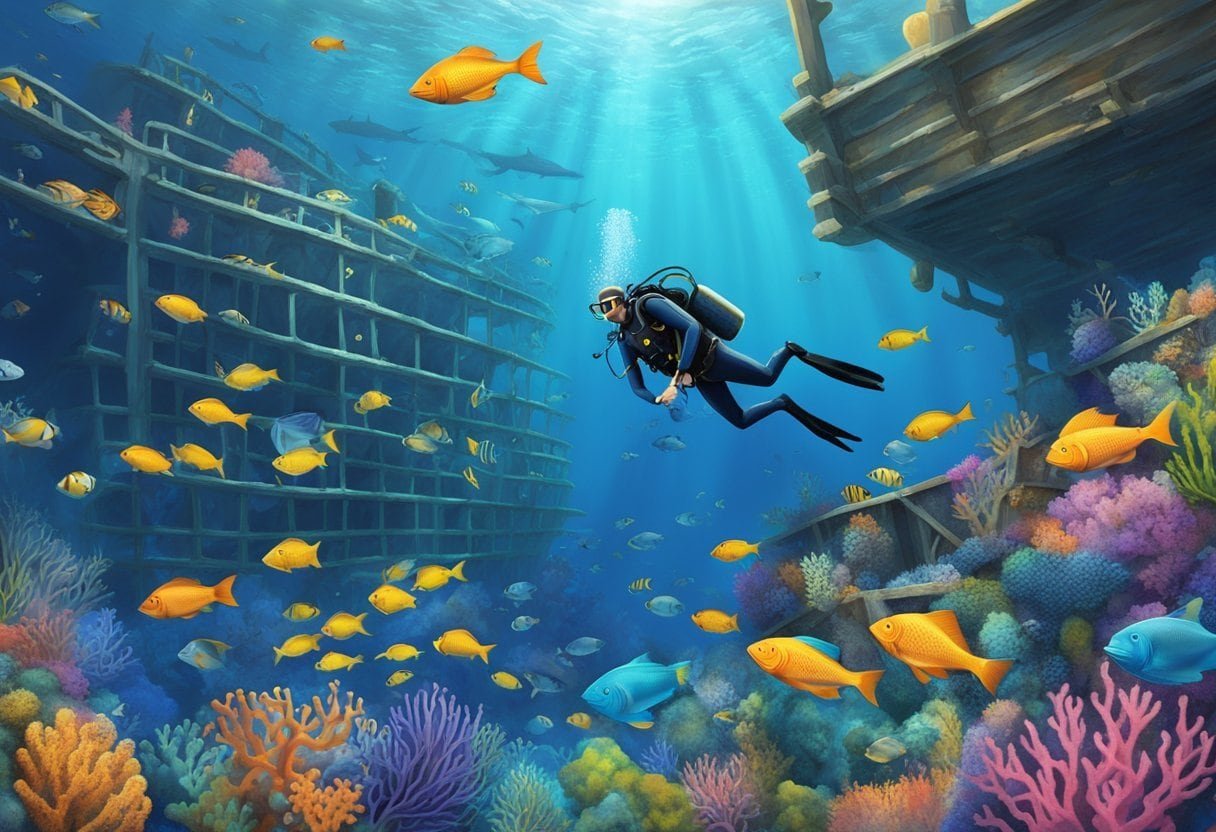
Treasure hunting off Florida’s coast raises tricky questions about preserving history and making money. People disagree on the right way to handle old shipwrecks and their valuable cargo.
Balancing Heritage and Commerce
Treasure hunting has been legal in Florida since the 1960s. Some see it as an exciting way to uncover history and riches. Others worry it damages important sites.
Archaeologists often clash with treasure hunters. They think old shipwrecks should be studied, not sold. But hunters argue they’re saving artifacts that might otherwise be lost.
Some wrecks, like the San Pedro, are now protected as marine sanctuaries. This keeps them safe for research.
Finding a middle ground isn’t easy. Rules try to balance preservation and salvage rights.
Hunters must report finds and share some with museums.
Ethical treasure hunters work carefully and share their discoveries. They see themselves as helpers, not looters.
The debate continues over how best to honor the past while allowing some treasure hunting fun.

